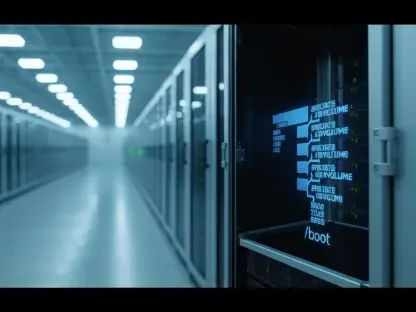In an era where cybersecurity threats continue to evolve, the importance of securing software supply chains has become increasingly paramount. Organizations face the arduous task of integrating robust security measures into their software development processes to safeguard against vulnerabilities. Recent insights from a global survey conducted by Atomik Research on behalf of JFrog have highlighted the current state of DevSecOps practices among application developers, cybersecurity, and IT operations professionals. The survey’s findings underscore significant gaps in software supply chain security, raising concerns about the efficacy of DevSecOps practices in addressing these challenges.
Security Gaps in Software Supply Chains
Despite the potential vulnerabilities looming in software supply chains, a startling 71% of surveyed organizations permit developers to download packages directly from the internet. This practice creates openings for external threats to infiltrate critical systems. Moreover, less than half of the respondents indicated their organizations scan software at the source code and binary levels. This lack of comprehensive scanning means many organizations operate with limited visibility into the origins of the software running in their production environments. Consequently, the possible risks associated with unvetted software components remain a significant concern.
Paul Davis, field CTO for JFrog, pointed out that while progress has been made in adopting DevSecOps practices, the challenge lies in effectively integrating these security measures into existing software engineering workflows. The survey revealed that nearly three-quarters of respondents work for organizations utilizing seven or more security tools and platforms. However, the effectiveness of these tools is often diluted by false positives, which obscure the genuine security threats that need immediate attention. Furthermore, the frequent addition of new software packages – an average of 458 new packages annually – only compounds the complexity of maintaining secure software supply chains.
Disconnect in Vulnerability Perception
The survey delved into the perceived severity of vulnerabilities, revealing a striking disconnect between high-profile vulnerability ratings and genuine exploitability. In recent months, over 33,000 critical vulnerabilities and exposures were disclosed. Yet, JFrog’s research discovered that only 12% of these high-profile vulnerabilities rated “critical” by government entities were genuinely severe. The analysis of 183 notable vulnerabilities demonstrated that 63 were non-exploitable in the applications scanned. This disparity between perceived and actual severity of vulnerabilities suggests organizations may be misallocating resources and effort to address threats that do not pose significant risk.
The trend of increasing software package downloads continues unabated, with organizations adopting an average of 38 new packages monthly. These additions contribute to a complex environment where securing software supply chains becomes increasingly challenging. Additionally, the widespread use of multiple programming languages further complicates security measures. Public repositories like Docker Hub and Hugging Face expand continuously, exposing a significant number of secrets and tokens. Such exposures underscore the need for more stringent security practices and close monitoring of public repositories to mitigate risks effectively.
Path Towards Enhanced Security Collaboration
Paul Davis emphasized the growing importance of securing APIs, especially as more organizations leverage public repositories to invoke AI models. He advocated for a shift in cybersecurity strategy, urging cybersecurity teams to collaborate closely with developers rather than merely listing vulnerabilities for them to address. Training a select group of developers to identify and recognize security issues and disseminate this knowledge among their peers could prove more effective in fostering a secure development environment. This collaborative approach ensures developers understand the criticality of security measures and integrate them seamlessly into their workflow.
Ultimately, each organization must develop tailored DevSecOps workflows that consider the present fragility of many software engineering processes. The findings highlight the necessity of cohesive efforts between cybersecurity teams and developers in enhancing the overall security posture of software supply chains. While DevSecOps practices have experienced growth, the survey results indicate there is substantial room for improvement in terms of effective implementation and integration.
Conclusion and Future Considerations
In a time when cybersecurity threats are constantly changing, securing software supply chains has become more critical than ever. Organizations now face the difficult challenge of implementing strong security measures within their software development processes to protect against vulnerabilities. Recent insights from a global survey by Atomik Research, on behalf of JFrog, have shed light on the current state of DevSecOps practices among application developers, cybersecurity experts, and IT operations professionals. The survey’s findings revealed considerable gaps in software supply chain security, sparking concerns about the effectiveness of DevSecOps practices in managing these threats. As cyber threats grow more sophisticated, it is essential for organizations to prioritize and enhance their DevSecOps strategies to ensure the integrity and security of their software supply chains. This will entail revisiting processes and fostering better collaboration across all relevant teams to address the evolving challenges in cybersecurity effectively.









